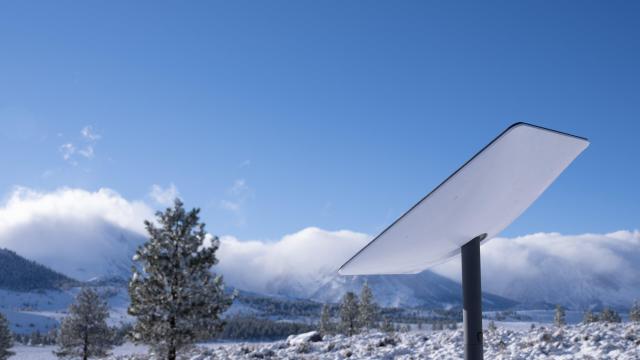SpaceX is trying to squeeze in the debut of its second generation Starlink satellites by the end of the month, hoping the Federal Communications Commission (FCC) will grant it temporary authority to loft its heftier broadband satellites.
The aerospace company filed a request with the FCC this week, asking for a 60-day special temporary authority to connect Starlink terminals already in use to the new satellites it plans to launch soon, SpaceNews first reported.
According to the regulatory filing, SpaceX wants to begin launching the Gen2s “before the end of December 2022.” If the FCC grants SpaceX the temporary authorization, the company would be able to start launching its Gen2 Starlink satellites before the commission issues its longterm approval.
SpaceX recently launched a batch of 54 Starlink satellites on a Falcon 9 rocket, putting the number of total satellites it has launched thus far at 3,600, of which 3,284 are currently operational, according to stats collected by astrophysicist Jonathan McDowell. But CEO Elon Musk is eager to see the next generation satellites reach orbit, a move that the company hopes will help it meet increasing demand for its internet services.
Earlier this month, the FCC approved SpaceX’s request to launch 7,500 Gen2s to low Earth orbit. The company had requested the launch of 29,988 Starlink satellites, but the FCC only granted approval to a quarter of the total. The reason why the commission is holding back on those remaining 22,488 satellites is to “protect other satellite and terrestrial operators from harmful interference and maintain a safe space environment, promoting competition and protecting spectrum and orbital resources for future use,” the FCC said in its order.
The Gen2s are designed to be more effective, measuring 6.71 m long (7 meters) and weighing roughly 2,755 pounds (1,250 kg), while its predecessors weigh about 573 pounds (260 kilograms). As a result of the larger, heavier payload, SpaceX was counting on its upcoming Starship rocket to launch the Gen2s as opposed to its Falcon 9 rocket, which is currently lofting the first generation Starlinks to orbit.
But with the date of Starship’s inaugural flight currently unknown, SpaceX is looking to prioritise the launch of its Gen2s even if they have to be modified to fit into a Falcon 9. In a letter to the Federal Communications Commission (FCC) on August 19, the company said it will downsize its next-generation internet satellites to make them fit into the Falcon 9 rocket.
The company is seemingly doing all that it can to see those Gen2s fly, but there aren’t too many days left in the year. As it stands, SpaceX is poised to launch an Israeli Earth-imaging satellite on December 29, but as Next Spaceflight points out, the Falcon 9 flight with the Gen2s on board could lift off on December 28 — pending FCC approval, of course.
SpaceX is already crowding low Earth orbit with its Starlink satellites, and the next generation satellites have astronomers even more worried about how the Starlink constellation might interfere with observations of the night sky. By the time they do launch, hopefully SpaceX would have figured out ways to mitigate the brightness of its satellite constellation so that it doesn’t block our views of the cosmos.
